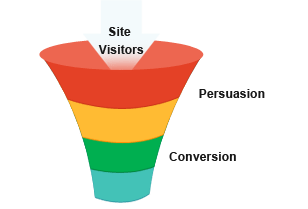
A website’s success is measured by the number of “hits.” That was in mid-2000s, and the global digital landscape has come a long way since then. Aside from analytics, key performance indicators (KPIs) are now used by marketers to gauge the performance of their websites. You cannot consider yourself as a digital marketer if you don’t know what conversion rate means, which is a basic web KPI.
While content marketing is used interchangeably with search engine optimization (SEO), these concepts require the measurement of the effectiveness and impact of the campaigns and tactics implemented. Now that’s KPI.
Reach
1. Unique visits
A visit is the standard measure of the number of individuals who get to view the contents specifically within a given timeframe. Unique visits, more precisely, are valuable when it comes lead generation purposes. However, this doesn’t mean that all unique visits are of value. This will still depend on the extent of interaction with the contents.
2. Geo concentration
Target audiences generally differ and yet they are boundary-less. It is important for every business to know where the audience is for better resource allocation. Google Analytics, for instance, provides geographic information regarding where the contents are being read. This helps content marketers in optimizing for that particular geos.
3. Delivery
Now that you know who and where your readers came from, the next best thing is to know how they are actually reading the contents. It is predicted that there will be 1.75 billion smartphone users by 2014 (4 out of 5 users is a mobile user). The key is to optimize not just the contents, but also its delivery when considering future publication.
Engagement
4. Page views
High page views are a sign of how engaged the readers are. This is also indicative of the frequency of visit. Page views, including how deep the readers get into exploring the site, inform future content development processes. Content relevance is key which translates to right content for the right target audience at the right timing.
5. Time spent
Google Analytics refers to this as bounce rate. Time spent is the most significant factor of engagement. This should be the main goal of content creation. Losing the readers is almost always the dead-end of content marketing, and the main reason is the failure to meet the readers’ expectations. That’s why the emphasis is on writing unique, informative and engaging contents.
6. Click patterns
Click patterns illustrate how the readers are actually engaging with site, pages and contents. Tracking these in-page patterns is critical as it highlights the importance of understanding which contents are relevant to the target audience and produce more of this form of contents.
Sentiment
7. Shares
Depending on whether the audience like what they’ve read, they might be prompted to share the content. This is the reason sites must publish engaging contents and put social widgets. Content reach expands exponentially through social shares, so make these widgets easy to find.
8. Comments
Conversations are important indicators of engagement. Advocate sharing thoughts and suggesting so the readers may start an open discussion of the contents. Comments are not always positive, but even negative comments are considered as great feedbacks. You will gain better insights about the behaviors and attitudes of your reader including knowing their ‘pain points.’ Respond in an evocative way when answering comments.
Content marketing is all about increasing reach and bottom-line. Futile it will be, however, if you can only obtain figures on the number of downloads or subscriptions. What’s more important is determining the KPIs and making sense of these indicators to maximize the content marketing strategy. This leads me to thinking that there should be another important KPI in the list.
Conversions
Ultimately, content marketing is useless without conversions. Conversions are the lifeblood of a business. Think of how much you are spending to convert a consumer to become a customer. How many leads do you need to close a customer? If the business can close 1 customer in every 20 leads, then the conversion rate is 5%. You need 4,000 leads to have 200 new customers. With this also, the cost per lead must be cost-efficient enough to sustain the process. If you are spending $1 per lead, you should spend $4,000 for 4,000 leads. Eventually, the profit from these 200 new customers must be ten-fold of $4,000. Now that’s real KPI!
Justify your content marketing budget. Don’t neglect the KPIs to get more out of your contents!
Are there any other KPIs that must be in this list? Let me know.



